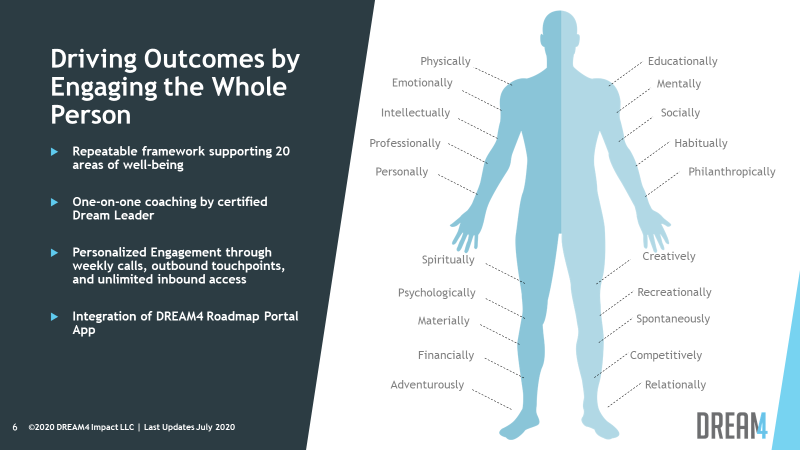Wellness Is About the WHOLE Person, ALL the Time
As we continue exploring the never-ending struggle to find, hire, and keep skilled employees, we know that “employee wellness” has become a centerpiece of that conversation. It is simply good business to invest in your team’s mental, physical, emotional, and financial well-being. Companies benefit because if people have good things going on in their personal lives, they also typically have good things in their professional lives.
How do companies provide wellness offerings that are valued enough by their employees to retain them?
Before we answer that question, we must first ask why wellness opportunities are more important now than ever.
A Virgin HealthMiles/Workforce survey found that about 87% of employees said they consider health and wellness offerings when choosing an employer. Wellness plans don’t have much sway in the employment decision process as other defined benefits. However, wellness programs do have a substantial impact on retention (even moreso than salary!) because a good wellness program can improve or increase employee commitment and loyalty.
When an employer offers a wellness program to its employees, the company says, “We think you are an important part of this organization, and we want you to be healthy, happy, and employed here for a long time.” When you offer your employees a wellness program, you are showing them that you care about them. You are letting them know you care about them as a person, not just as an asset to the company. It lets employees know that they are appreciated.
So, what type of programs help with employee retention?
Of employers polled for a Robert Half survey, 74% said they have mental wellness offerings of some sort, such as stress management programs. Another 65% of employers offer financial wellness resources, such as retirement planning or credit counseling. And 63% said they provide gym access, incentives for engaging in healthy behavior, or other physical wellness options. It has become commonplace for companies to focus their wellness programs on physical and financial assistance to decrease stressors that can impact the workplace.
And while these are all fundamental areas of engagement for employee wellbeing, that is only a fraction of what impacts a person’s wellbeing. Other areas of wellbeing include:
- Relationally: are you providing space for your employees to develop and maintain healthy relationships?
- Philanthropically: are you investing in your community and encouraging participation from your employees?
- Intellectually: are you helping your employees find new exciting ways to explore, discover, and learn?
- Personally: are you helping your employees take responsibility for their lives, circumstances, and happiness?
- Spiritually: are you encouraging your employees to explore and develop their spiritual wellness?
- Socially: are you providing ways and information for your employees to feel connected and secure in their community?

That is the DREAM4 difference – we have a repeatable framework that focuses on the whole person.
Why?
Because individuals “get stuck” and their momentum is derailed in various ways – not just in the physical or financial aspects of their lives. As a leader, if you could spend more time, genuinely and authentically, “breathing into” each person on your team, then each individual would benefit immensely from this investment. And while most leaders intend to pour into, mentor, and support their teams, there is sometimes a disconnect between their intention and implementation. So, we partner with them to extend this offer of care, because the truth is that the only way to spell CARE is TIME.
Do you have a strategy that acknowledges the WHOLE person to support and develop the members of your team?
Let us show you how to close the gap between where you are and where you want to be: contact us today!




